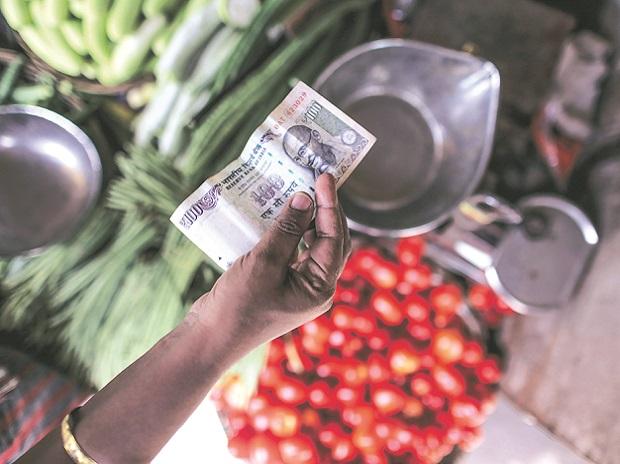The wholesale price index (WPI)-based inflation rate for December decelerated to a 22-month low at 4.95 per cent, on the back of a higher base and the easing of price pressure for food and manufactured products.
In November 2022, wholesale price inflation stood at 5.85 per cent. In December 2021, it was at 14.27 per cent.
The data released by the Ministry of Commerce and Industry on Monday showed food inflation — excludes manufactured food items — at minus 1.25 per cent contracted in December, from 1.07 per cent in November, as vegetable prices (minus 36 per cent) fell from their year-ago levels. However, the inflation rate for cereals, paddy, wheat, and pulses went up in December.
This is the third consecutive month that factory-gate inflation has recorded a single-digit print after remaining in double digits for 18 successive months.
Although the Reserve Bank of India tracks retail inflation for its monetary policy decisions, easing wholesale price inflation may lead to further decline in the retail inflation rate that hit a 12-month low in December at 5.72 per cent.
Interestingly, retail inflation exceeded wholesale price inflation in December for the second successive month. The gap between the two widened to 75 basis points (bps), from just 3 bps in November. The extent of the decline in retail inflation has been constrained by stickiness in core Consumer Price Index inflation.
Core WPI inflation — representing non-food and non-fuel items — also eased for the seventh straight month to 3.2 per cent in December, from 3.4 per cent in November, led by slower rise in the prices of manufactured products.
Fuel inflation at 18.09 per cent, however, increased in December, led by higher petrol prices, compared with its year-ago levels. However, inflation for manufactured items eased to 3.37 per cent in December, led by softening price pressure in sectors like food, tobacco, textile, leather, paper, chemical, and pharmaceutical, among others.
Sunil Sinha, principal economist at India Ratings & Research, said worries are pronounced on the food front, notwithstanding the category of food articles witnessing deflation in December.
“Cereals in December witnessed the fifth consecutive month of double-digit inflation. It is now at a 113-month high. Except for paddy and ragi, all other cereals are seeing double-digit inflation on a sustained basis. Milk inflation firmed up to a 92-month high of 7 per cent in December,” he added.
ICRA Chief Economist Aditi Nayar said despite the sequential fall in average wholesale prices of several food items in early January, annual food inflation is likely to witness an uptick in the month on account of an unfavourable base.
“However, the monthly average of the dollar-rupee pairing has strengthened in January so far, relative to December 2022, amidst a fall in the dollar index. This is likely to augur well for the landed cost of imports in the ongoing month. Overall, we project WPI inflation to print between 4.5 per cent and 4.9 per cent in January, before easing to a sub-2 per cent by March 2023, unless commodity prices rebound,” she added.
Gaura Sen Gupta, economist at IDFC First Bank, said from a gross domestic product (GDP) deflator perspective, WPI is important since it constitutes more than 60 per cent weighting.
“We expect nominal GDP growth in 2023-24 to slow to 10.6 per cent versus 15.5 per cent in 2022-23, reflecting moderation in real GDP growth and slowdown in inflation,” she observed.





GIPHY App Key not set. Please check settings